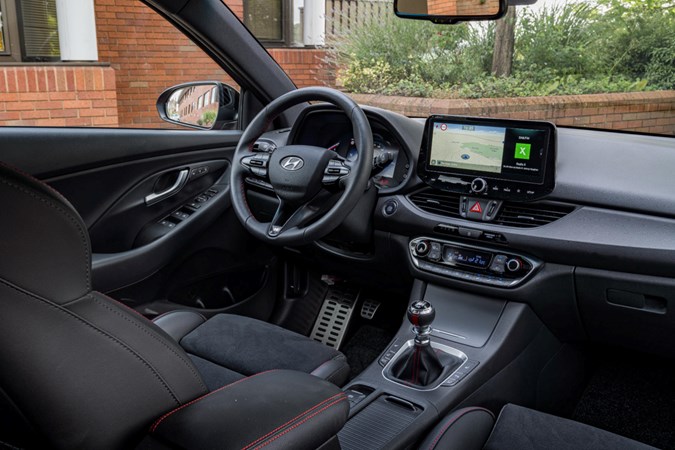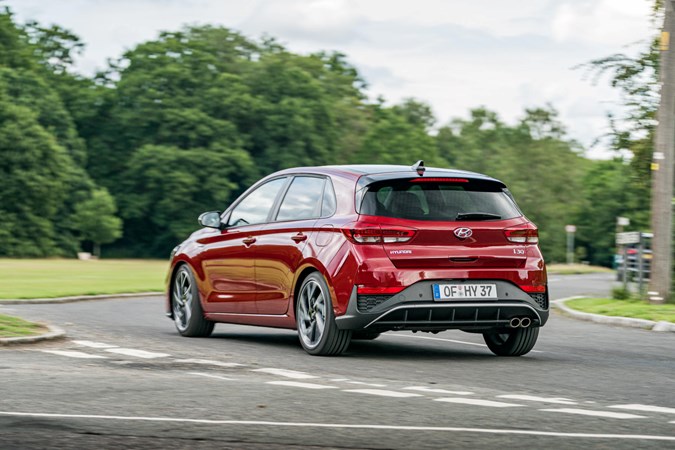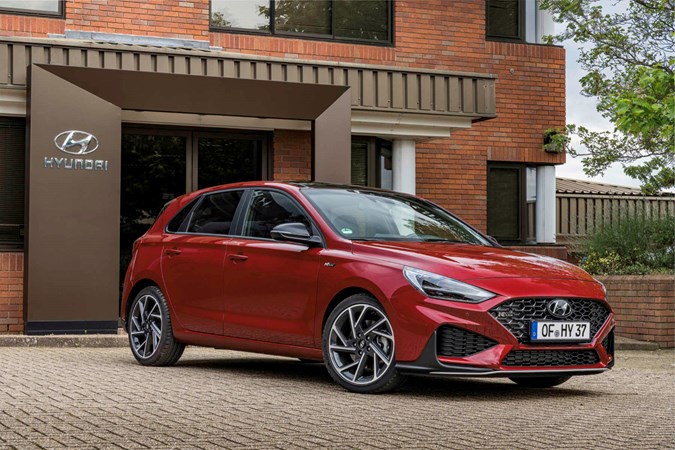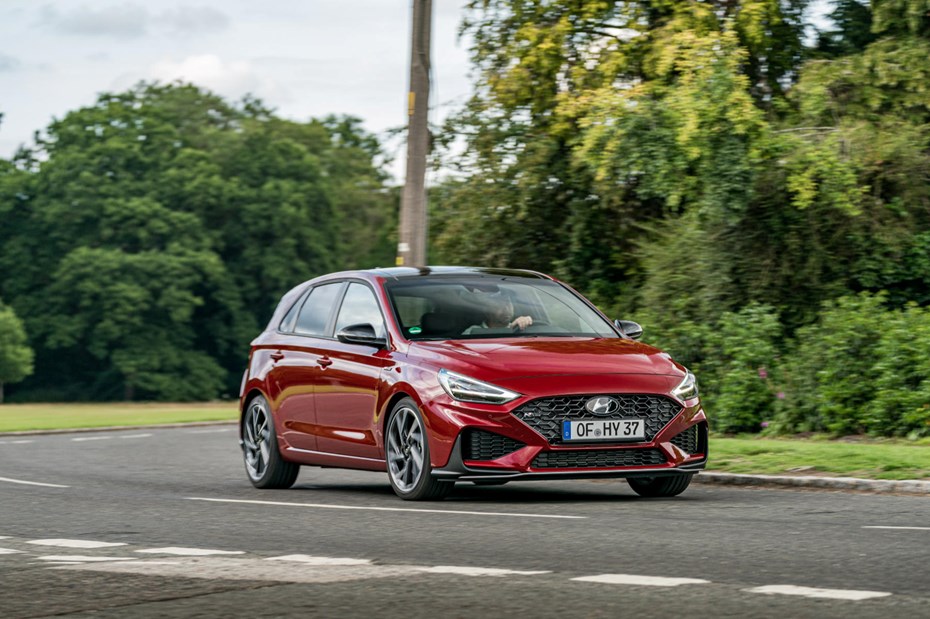Hyundai has given the i30 a mid-life refresh. Chief of the changes are the addition of a new mild-hybrid engine, an even milder facelift, and the usual advances in safety, connectivity, and frugality.
UK sales are expected to start in September or October. Prices are yet to be announced, but expect top-spec cars to be around the £22,000-£23,000 mark.
Engine lineup
Let’s start with that new engine. It’s a development of the old 1.4-litre, but now increased to 1.5-litres. It makes 160hp and has a 48-volt starter/generator mild hybrid system. Essentially it recovers energy under braking, which is then stored and used under acceleration. This reduces the stress on the engine, resulting in lower emissions and higher MPG. This engine will only be available in sporty N Line trim.
Elsewhere in the engine lineup, there’s another mild hybrid, in the form of a 1.0-litre with 120hp. This same engine is also available without the 48-volt mild hybrid system.
And finally, there’s a 1.6-litre diesel engine too. This comes as standard with that mild-hybrid system.
Evolutionary, not revolutionary styling
You’d be forgiven for not spotting the subtle styling tweaks. Up front, there’s a wider grille and slimmer headlamps. Plus, now there are new daytime running lights.
At the rear there’s a new bumper design, apparently designed to improve aerodynamic performance. Fresh rear lights finish the styling package.
N Line spec cars have also had a few more changes. In case you didn’t know, N Line is the kinda sporty one. Looks a bit like the i30 N, but is a lot more economical, and nowhere near as quick.
Out back there’s a rear-diffuser to bolster the sporting pretense, and buyers will have the option of 17-inch or 18-inch wheels.
New tech, same interior
Hyundai has given the i30 a new infotainment system that includes a 7.0-inch digital instrument cluster and a 10.25-inch screen.
The prototype we drove was just that – a prototype. So it’d be unfair to fully evaluate these systems. But the pieces we used, like the sat-nav and reversing camera, worked well.

Expect the usual array of new tech on offer, like Android Auto, Apple CarPlay, and wireless phone charging and mirroring.
Bluelink will be available with this latest i30 too. This is Hyundai’s connected car service, that allows you to perform actions via an app on your phone. Locking your car, locating your car, and checking tyre pressures are the highlights of the app.
Safety first
Alongside the other tech advances, of course, a suite of new safety features are available. Lane Following Assist adjusts the steering to keep the car in its lane, Rear Collision Avoidance System can brake the car if it senses an obstruction.
While Leading Vehicle Departure Alert tells the driver in front of them has moved off if they don’t react quickly enough. Hyundai won’t say it’s for this, but it’s aimed at selfish people who don’t move at a set of traffic lights because they’re distracted by their sat nav or phone.
What’s it like to drive?
We should preface this by saying the car we drove (the one in the pictures) isn’t quite production ready.
But if you’ve driven the current i30, you won’t find any huge surprises with this new one.
Our model was the most powerful N Line version, the 1.5-litre engine with 160hp.
It’s quick enough for any situation an i30 owner could possibly throw at it. You’d be hard pushed to tell the difference in performance when compared with the old 1.4-litre. Peak power is delivered between 2,500rpm and 3,000rpm, so it doesn’t love being revved. But that just gives you an excuse to use the slick six speed manual gearbox.

It’s a really sweet shifting ‘box with meaty feedback, giving you confidence in slotting the gears home in the correct place. Pleasingly short throw, too. Clever as well. It can decouple from the engine to run in neutral to improve MPG. This works well and is barely noticeable.
However, like with quite a few Hyundais, the clutch is oddly high, making it easy to stall.
There’s not a great deal we can say about the ride, other than that the prototype was harsh and stiff. Something that will change before the car arrives properly in the UK.
Should I buy a Hyundai i30?
It’s probably too early to tell because the prototype we drove was only around 80% finished.
There’s no denying this new i30 seems like an improvement over the old car. Nearly everything seems that little bit better. The mild hybrid works well, and although we’re yet to see MPG of emissions figures, we imagine it’ll sell well.
Inside, the new big screens help bring the i30 up to date. But we can’t help but feel the Ford Focus is still a better drive, and the new Volkswagen Golf is fresher and more modern.
It’ll all come down to the price. But if Hyundai can get the monthly payments right, it can definitely be a viable alternative to either the Focus or Golf.
Further reading
>> How good is the current model? Read the full review
>> First look and drive of the new Hyundai i20
>> Dealwatch: the best new car deals

Just so you know, we may receive a commission or other compensation from the links on this website - read why you should trust us.










